The exhibition is held at the Moscow Museum of Modern Art on Yermolayevsky Lane from June 29 to October 2 and is prepared in collaboration with the AyarKut Foundation for Contemporary Art and with the support of the Yuri Gagarin Center for Culture and Modern Art.
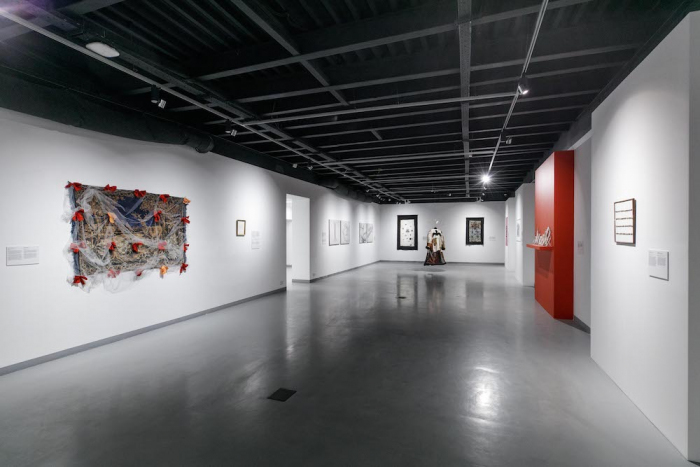
"Save Up Laughter for Winter…" exhibition. MMOMA. 2022
In your opinion, what is the main value of this exhibition for the Moscow public and for Yakutia as a whole?
A.B.: Its main value is getting to discover the contemporary art of another region. For a variety of reasons, we began to travel more across Russia. But traveling somewhere to see everything with your own eyes is not always possible. So this exhibition gives the Moscow public a chance to see how great Yakutia's contemporary art is.
Ye.V.: This allows to create a full-fledged Russian cultural landscape, perhaps even a global one. Just this morning, my daughter and I were passing by the Manege, and I was telling her how artists from all over Russia, including Chukotka and Yakutia, used to exhibit their works there. This formed a unified landscape, helping people to appreciate how beautiful and united our country is. Since the early aughts, we – that is, various art communities and museums – have tried a variety of ways to energize the art scene: we held biennales, festivals, and Yakutia Days in Moscow. It was important for us to give the stage to the artist, as artists live for impressions.
A.B.: Seeing the world and interacting with it is important for artists in general.
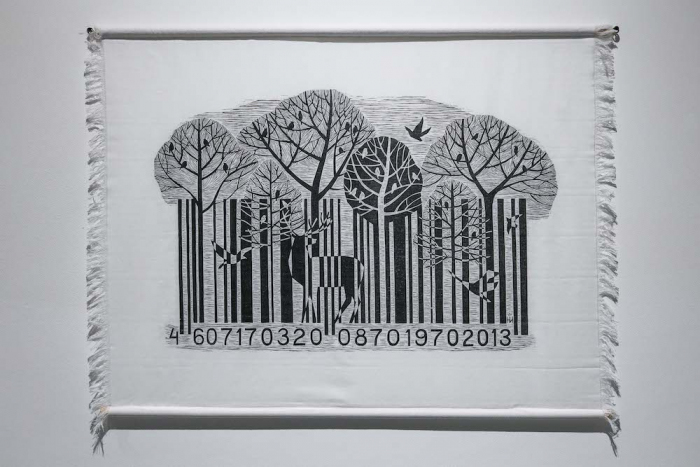
Nadezhda Komissarova. Barcode. 2013
What is the current state of contemporary art in Yakutia and the exchange of experiences at various venues? How often do you organize events like this and hold them outside of Yakutia?
A.B.: The AyarKut Foundation, launched by Nadya Zinovskaya and Arsen Tomsky, had many plans, but they are currently undergoing transformation and restructuring. Of those that have already been implemented, last year, AyarKut hosted a booth at the blazar fair. It enjoyed great popularity, immediately selling out almost all of the works.
Ye.V.: The Foundation gave us an understanding of who is active on the art scene in Yakutia. As a curator, I interact with a variety artists, but there had not been a full understanding of how many were actually active. The first wave saw 50 applications from self-described "members of the Yakut art scene." Both the participation in blazar and the experience of holding an online exhibition curated by Aleksandr Burenkov gave un an impetus.
And now, the project "Save Up Laughter for Winter…" is incredibly important for our Yuri Gagarin Center for Culture and Modern Art, as this is our first experience of partnership with an institution as prominent as the MMOMA and our first collaborative experience outside of the republic.
Ye.V.: We were once asked, "How does Yakut art differ from the art of other regions?" Our art market is not as pronounced, the artists create art for themselves – essentially, we visit each other's homes and try to come up with something. The artists do a lot of work with traditional context.
A.B.: And have a lot of interaction with nature.
Ye.V.: Nature is one of the main characters. Yakut artists love nature.
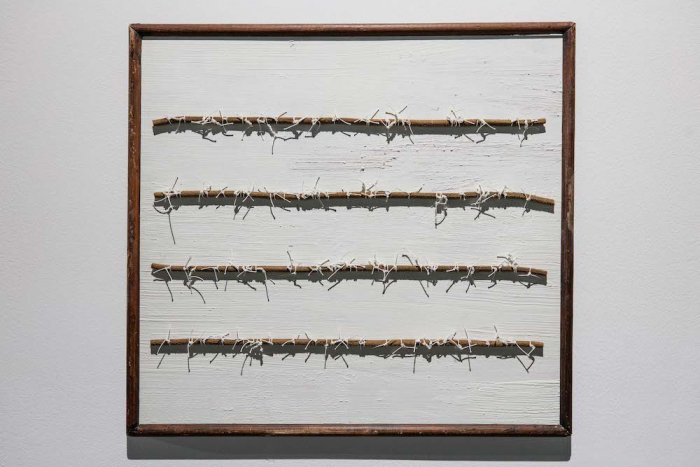
Olga Skorikova. From November to February. 2021
Regarding the name of the exhibition, what is winter like in Yakutia and why do you have to save up your laughter for its arrival?
A.B.: The name is great. However, as a PR person, I resisted, because Yakutia is already primarily associated with cold weather, and I wanted that to change. But after talking to Lena, reading her curatorial texts, and talking to the artists, we realized that we had to pick this title and no other.
Ye.V.: The title is based on the lines by the young Yakut poet Gabba (Gleb Gabayev): "Save up laughter for winter, like a beast saves up fur and fat…" I could not get these lines out of my mind for a long time. This is how I interpret these words: from childhood, we accumulate all of our drive, all of our joy, and it helps us later in our life, no matter what winters come. I do not want to say that winter is about overcoming and surviving. Rather, it is a period in which you have to concentrate, unite with others, and live your life a little differently. Our famous ethnographer Yekaterina Romanova once said that Olonkho* is a promise of summer. The Olonkho epics were told in winter so as not to lose hope that the summer will come one day. Although all artists work hard, accumulating this joy is the reason why they create art.
A.B.: The artists actually create all of their works from the heart and in their free time. They create because they want to.
And what is it like, winter in Yakutia?
Ye.V.: It can be very different and is incredibly beautiful. Of course, I love early winter. But at –55°C, with very short days and thick fog, it feels like we are under a dome of some kind. It is a time of reflection, a time of self-immersion. I love winter, when you rush home, and when time slows down. But winter is also when creative people are most active, when they organize various exhibitions and theatrical productions. Winter is a frantic time for the cultural sector. In summer, few people want to work, we want to take our time to breathe the fresh air, to go to the countryside.
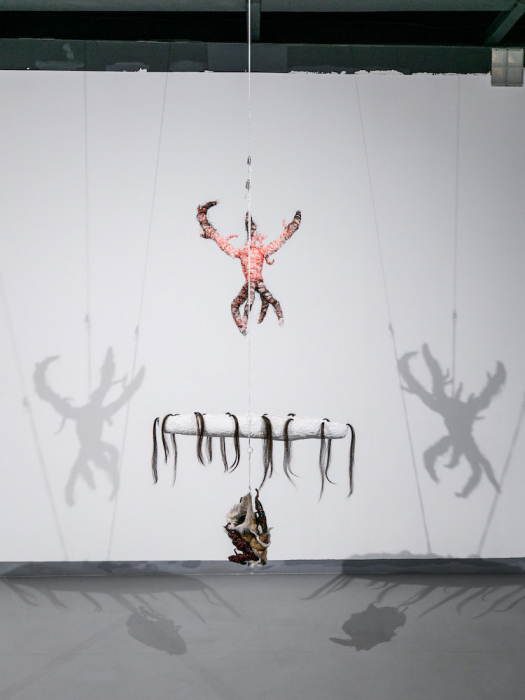
How does one weather a figurative "winter" period in their life? Could you share your experiences of living through the cold and long Yakut winters?
Ye.V.: Yakutia has a very long history, but we only recently joined the global community. And it seems to me that the desire to unite in artistic organizations is directly linked to the times when we lived in tribal communities. Winter should always be experienced together with your loved ones, of course. And that is what I love about the community that is emerging around contemporary art and museum projects: a very comfortable level of communication. It is great to have kindred spirits, to find someone who thinks like you. There is no competition here, at least I do not sense it, but there is always a desire to share information and experience. It is so great.
A.B.: It is important to seek out like-minded people.
Ye.V.: It also helps to live every season, every day. We prepared the exhibition on a fairly tight schedule and mostly accepted finished works. All of the artists, without any prior discussion, explore the topic of time and living in time. Each of them has a reference to times associated with our ancestors in their works. You can relate to all of that through your genetic memory, and every artist uses this. For example, the fur coat we made allowed us, in referring to the women of that time, to get to know each other better. We sat together and stitched together pieces of clothing that we ourselves, our mothers, and our grandmothers used to wear, even though none of us knew how to sew. And the conversations we had in the process really brought us closer to each other. We are grateful to this project and to the foundation that helped us realize how necessary and important it is for people to see this, and not just in Yakutia.
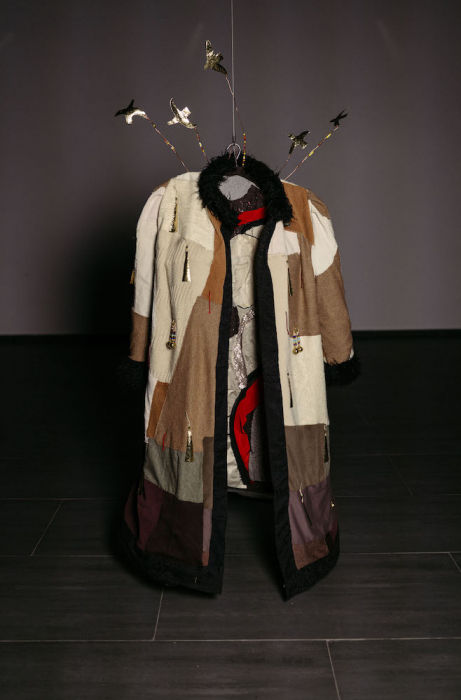
Archetype Group. YMYY. 2022
What future prospects do you see for such projects? Could an exhibition like this be held anywhere else?
A.B.: We talk about interaction between regions a lot. However, given the topic of the collection, I can see this exhibition in Berlin, for example, or someplace else. The interaction between the artist and their memory, their personal experience, is a good and popular topic that is of interest to the global community as well.
Ye.V.: If we were doing an exhibition just about Yakutia, we would accept other works as well.
A.B.: I think we would make use of woodcarving works.
Ye.V.: Yes, the main idea is communication between one person and another. Some people will relate to the theme of time and living in time or childhood and adolescence, while for some it will be the theme of generations. It is a story without nationality.
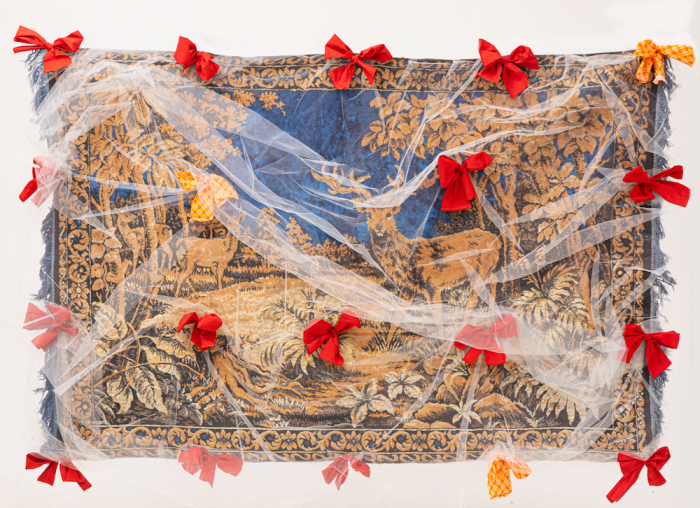
Natalya Nikolayeva. Red Letter Day. 2022
*Olonkho is a series of ancient Yakut folk epics as well as the tradition of its retelling. It is recognized as an Intangible Culture Heritage by UNESCO. Scholars refer to the ancient epic Olonkho (emphasis on the last syllable) as "the Northern Iliad" or "the Yakut Odyssey." https://www.culture.ru/institutes/7151/olonkho
Source: http://artuzel.com/content/obeshchanie-leta-ili-kopi-smeh-k-zime-intervyu-s-kuratorami-vystavki
photos courtesy of the MMOMA Press Service